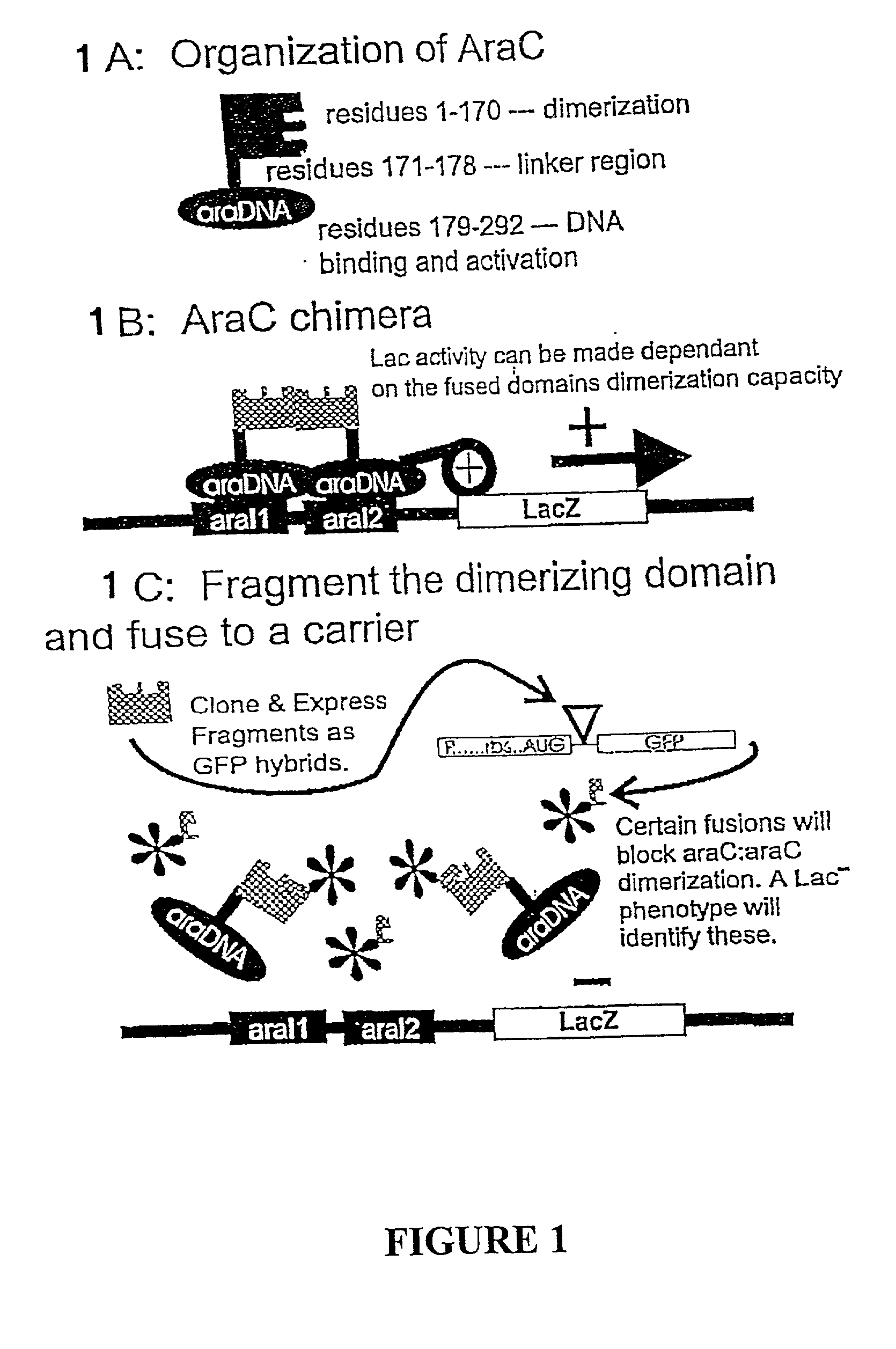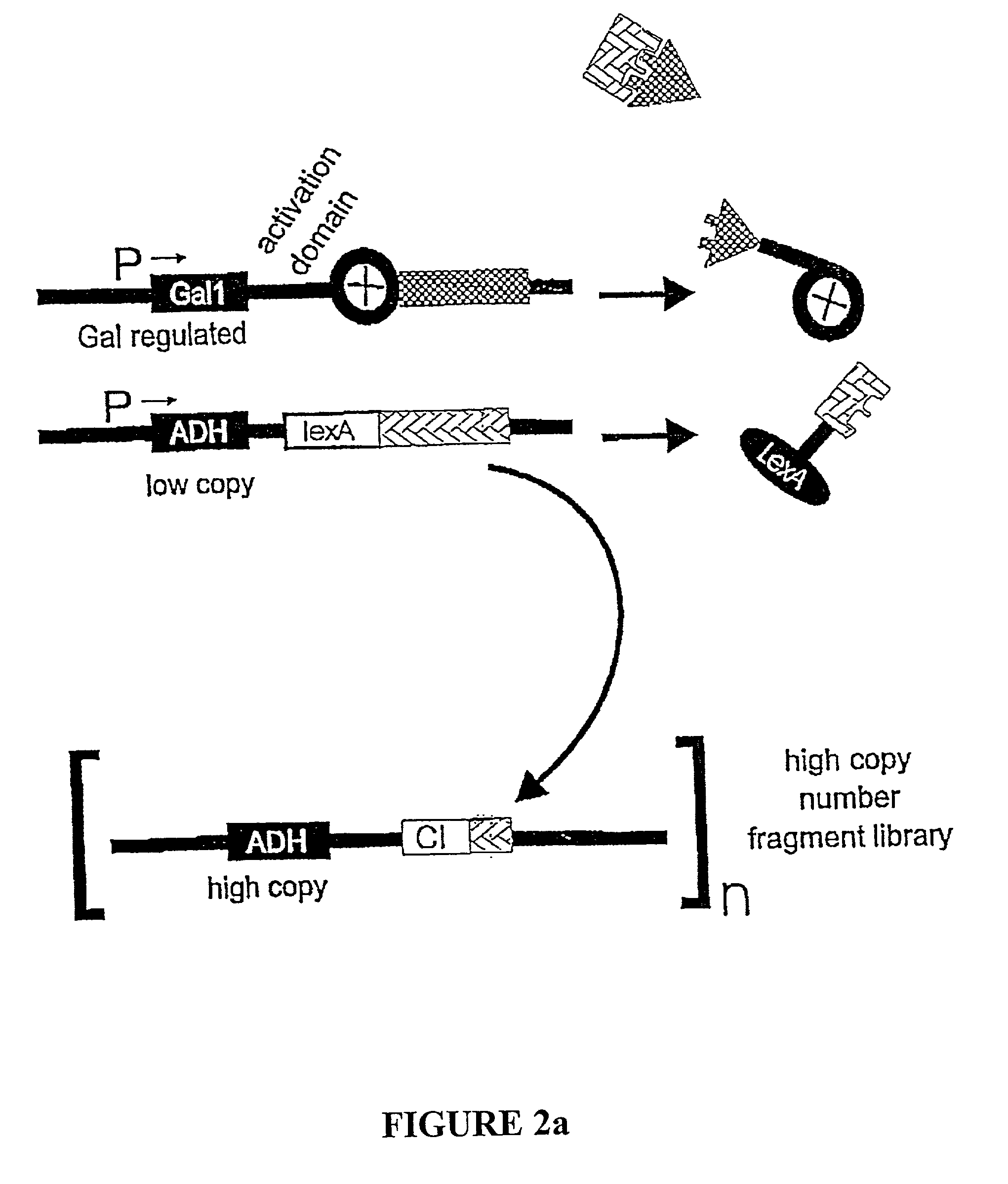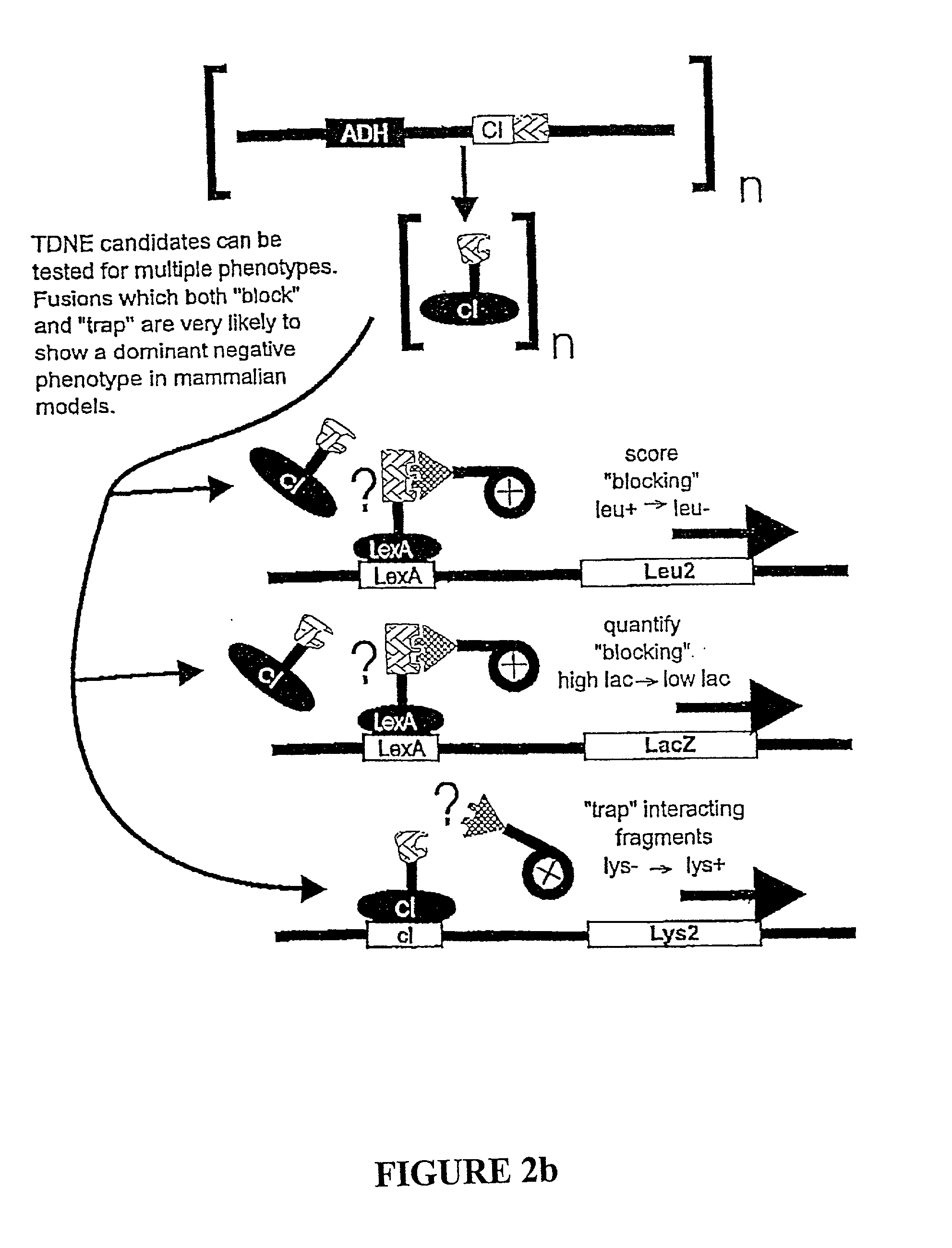Methods and compositions for the determination of protein function and identification of modulators thereof
a protein function and protein technology, applied in the field of identification of fusion proteins, can solve the problems of only efficient and easily applicable techniques, the function of identifying the gene will remain, and the technique is only efficient, so as to improve the inhibitory effect of dominant-negative peptides, improve the sensitivity of methods, and alter the formation of protein-protein interactions
- Summary
- Abstract
- Description
- Claims
- Application Information
AI Technical Summary
Benefits of technology
Problems solved by technology
Method used
Image
Examples
example 1
6.1. Example 1
Identification And Isolation Of TDNE For Ras-Raf Interactions
[0241] The interactions of Ras and Raf have been well characterized and provide a model system to demonstrate the successful use of the methods and compositions of the invention. Recent reports show that a synthetic Raf-Raf interaction can promote constitutive Ras pathway signaling. Flory et al., 1998, J. Virol. 72:2788-2794; Mineo et al., 1997, J. Biol. Chem. 272:10345-10348. The following example describes successful use of a yeast-based modified dual-bait strategy and an AraC-based system to identify TDNEs that block ras-raf protein-protein interactions.
[0242] Introduction To Ras-Mediated Signal Transduction And Ras-Raf Interactions. Ras proteins are plasma membrane-bound GTPases that function as relay switches transducing extracellular signals to the nucleus. In normal cells, Ras proteins cycle between the inactive GDP-and active GTP-bound forms to regulate cell proliferation and differentiation. Details ...
example 3
6.3. Example 3
Analysis Of Competition Between Sequences For The Activation Domain-Partner Protein In The Modified Dual-Bait System
[0273] In this example, competition between LexA-dfRas and CI-dfRas for interaction with Ad-cRaf1 in yeast S. cerevisiae strain SKY48 is illustrated. In order to isolate TDNEs from a library, the full-length HA-Ras1(C186G) fused to the LexA DNA binding protein (DBP) and the TDNE candidates fused to CI-DBP must compete for binding to the AD-cRaf1 fusion protein. If the AD-cRaf1 fusion protein is present in excess, competition will not be observed. Under the conditions normally employed in yeast protein interaction assays (2% galactose, 1% raffinose), such competition is not seen (see FIG. 9A). In order to observe such a competition, the level of AD-cRaf1 fusion protein was down-regulated by systematically varying the concentration of glucose (an inhibitor of regulated gal promoter expression) in the growth media.
[0274] To construct the relevant series of s...
example 4
6.4. Example 4
Screening a Library of Ras Fragments for Members That Interact with Raf and Block the Ras-Raf Interaction Signal
[0276] The Example presented herein describes the successful generation and screening of a TDNE library of ras protein fragments. In particular, it is shown that through the use of the modified dual-bait system of the invention, an interaction signal could be titrated by co-expression of one of the interacting partners: the signal resulting from the LexA-Ras::Raf-AD interaction could be titrated by co-expression of the CI-Ras. A system in which an interaction signal can be attenuated by the co-expression one of the full length interaction partners (not fused to the signal generating assembly) is an important prerequisite to searching for fragments of that partner which can reduce the interaction signal.
[0277] It is noted that the results shown herein validate the TDNE approach of the present invention in that the TDNE identified in this screen for TDNEs that ...
PUM
| Property | Measurement | Unit |
|---|---|---|
| Length | aaaaa | aaaaa |
| Biological properties | aaaaa | aaaaa |
Abstract
Description
Claims
Application Information
 Login to View More
Login to View More - R&D
- Intellectual Property
- Life Sciences
- Materials
- Tech Scout
- Unparalleled Data Quality
- Higher Quality Content
- 60% Fewer Hallucinations
Browse by: Latest US Patents, China's latest patents, Technical Efficacy Thesaurus, Application Domain, Technology Topic, Popular Technical Reports.
© 2025 PatSnap. All rights reserved.Legal|Privacy policy|Modern Slavery Act Transparency Statement|Sitemap|About US| Contact US: help@patsnap.com



